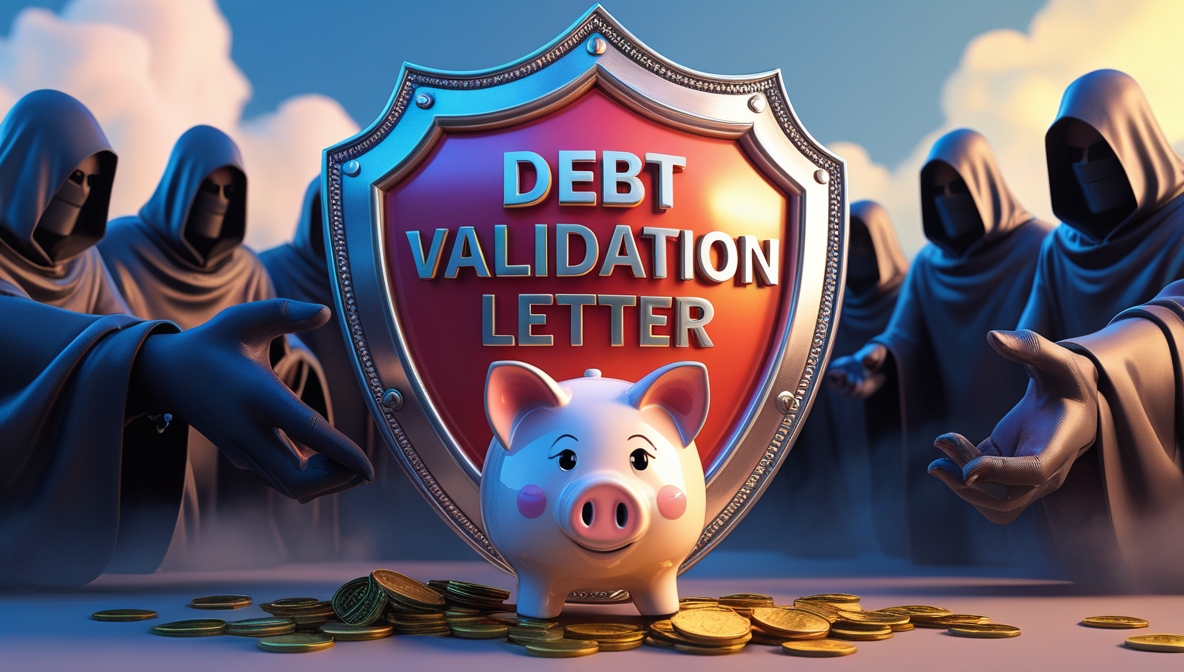The Silent Toll
There’s a phantom in the machine. A ghost that lives in the space between the money you earn and the wealth you build. You don’t see it, not really. You feel it. You feel it in the gnawing sense that the numbers should be higher, that your hard work should be yielding more. It’s a quiet, persistent drain—a death by a thousand cuts administered by the very system you trusted to grow your future. These are the investment management fees, the unseen toll collectors standing guard at the gates of your financial freedom, and their price is far higher than you’ve been led to believe.
This isn’t just about numbers on a page. This is about the vacations you don’t take, the years you can’t afford to retire, the security that feels forever out of reach. It’s time to turn on the lights and see the ghost for what it is.
The Ghost in the Machine
The truth is stark: investment fees are a slow-acting poison to your portfolio. A seemingly tiny percentage, repeated year after year, compounds into a monstrous sum, devouring a shocking portion of your potential gains. They come in many guises—AUM fees, expense ratios, trading costs—all designed to be just complex enough to discourage scrutiny.
But knowledge is the antidote. Understanding these costs is the first, most powerful step toward neutralizing them. This is not a game you are destined to lose. It’s a system you can learn, a code you can crack. You have the power to slash these costs, take command of your capital, and reclaim the future that is rightfully yours.
What Exactly Are These Fees?
At their core, these fees are the price of admission. They are the charges levied by financial professionals or entire institutions for the service of handling your money. They pay for the research, the trades, the glossy pamphlets, and the corner office with the nice view. They compensate the manager for their supposed expertise.
But wrapped in layers of jargon—Assets Under Management, expense ratios, turnover—is a simple transaction: they take a piece of your pie. And the brutal, unspoken truth is that their incentive is not always aligned with yours. Their incentive is to get paid, whether your portfolio soars like an eagle or drops like a stone.
A Rogue’s Gallery of Common Fees
These costs are not a monolith; they’re a motley crew, each with its own way of picking your pocket.
- Assets Under Management (AUM) Fee: The most common suspect. This is an annual percentage skimmed off your total managed assets. It can range from a “mere” 0.2% to a staggering 2% or more. The cruel joke? As your account grows, their payday gets bigger, regardless of their performance.
- Expense Ratios: This is the operational drag inside mutual funds and ETFs. It’s the cost of keeping the lights on for the fund—management, administrative, and marketing expenses, all bundled into one persistent, value-sapping percentage.
- Trading Commissions & Other Gremlins: Beyond the big two, a whole host of other costs can infest your account. Performance fees that reward managers for beating a benchmark, trading costs from excessive portfolio turnover, and various “administrative” fees for services you might not even realize you’re receiving. Being aware of all potential charges is essential for assessing the true cost of investment management.
Seeing the Numbers in Broad Daylight
Sometimes, the abstract nature of these percentages makes them feel harmless. The numbers on the screen can feel like a foreign language, designed to be glanced at, not understood. Watching someone walk through the math, step by agonizing step, can be the jolt needed to see the reality hiding in plain sight.
Source: Investment Management Fees | What You’re Paying & What You Get via Ocean 6 on YouTube
The Devastating Power of Fiscal Drag
The air in the modular trailer was thick with the smell of stale coffee and diesel fumes. From his bunk, Franklin could see the skeletal framework of the oil rig silhouetted against a bruised purple dawn over the Gulf. He’d been out here for three weeks, a brutal physical grind that was supposed to be building a fortress of security back home. But the numbers on his laptop screen told a different story. They told a story of stagnation.
He squinted, his calloused fingers tracing the lines on the investment statement. Decent market year, he thought. So why did his balance barely budge? And then he saw it. A line item he’d always ignored, written off as the cost of doing business. The “management fee.” 1.25%. It didn’t sound like much. But as he scrolled back through the years, he saw the same charge, over and over, a relentless tick feeding on his life’s work. A cold dread, heavy and metallic, settled in his gut. It wasn’t just a fee. It was a leak. A slow, steady hemorrhage of the future he was breaking his body to build.
This is what the industry politely calls “fiscal drag.” It’s the anchor that a seemingly small fee attaches to your portfolio. That 1% annual fee doesn’t just cost you 1% of your gains this year; it costs you all the future gains that 1% would have generated, compounded over decades. The impact of weak investment management strategies is profound, but high fees are the silent killer, turning the miracle of compounding into a tragedy of erosion. Understanding this is the absolute bedrock of successful advanced investing and wealth building.
The Celebrity Chef vs. The Vending Machine: Active vs. Passive Fees
Your choice often boils down to this: do you hire a celebrity chef or use a perfectly engineered vending machine? The chef (active management) promises a bespoke, magical experience. They claim they can time the market, pick winning stocks, and deliver a feast that defies expectations. For this, they charge a premium. Of course they do. Their expense ratios are high, covering the cost of their “genius” and frequent trading. This is one of the biggest battlegrounds where investment management fees are debated.
The vending machine (passive management), however, makes a simpler promise. It will deliver a consistent, predictable, market-tracking product every single time for a fraction of the cost. Index funds and ETFs don’t try to be heroes. They just track the market, and their expense ratios are breathtakingly low. The wry irony? Study after study shows that over the long haul, most celebrity chefs fail to cook a better meal than the humble vending machine, especially after you factor in their exorbitant bill.
Are You Ever Justified in Paying Top Dollar?
The air in the hospital waiting room was sterile, smelling faintly of bleach and anxiety. Dr. Meilani, a cardiothoracic surgeon accustomed to being the one in control, felt a profound lack of it. Her father had just had a stroke, and the world had tilted on its axis. As she sat there, her phone buzzed. It was her financial advisor. Not with market news, but with a calm, steady update: the paperwork for her father’s trust was being handled, the tax implications were being mapped out, and a strategy for liquidating certain assets for long-term care was already in motion.
Months ago, Meilani had winced at her advisor’s 1.1% fee. It seemed high. But in that moment, the fee felt less like a cost and more like an anchor in a storm. She wasn’t just paying for stock picking. She was paying for someone to manage the crushing complexity of her financial life while she was busy saving actual lives. She was paying for peace of mind.
So, are high fees always a scam? No. The real question is one of value. If you’re paying for comprehensive wealth management that includes sophisticated tax planning, estate strategy, and risk mitigation that you cannot replicate, a higher fee can be a bargain. But if you’re paying a premium for what amounts to a basic, off-the-shelf index fund portfolio, you’re not a client. You’re the product.
Seizing the Controls: How to Starve the Fee Beast
Sunlight streamed into her home office, illuminating the intricate lines of the coastline she was mapping on her screen. For years, Aubrey, a freelance cartographer, had outsourced her financial map to someone else. She paid them handsomely to navigate. But after a nagging feeling led her down a rabbit hole of fee calculators, she’d made a change. A powerful, terrifying, exhilarating change.
With the same precision she used to chart estuaries and mountain ranges, she had transferred her assets to a low-cost platform. She spent weeks learning, reading, devouring information about index funds and asset allocation. The first time she executed a trade herself, her heart hammered against her ribs. But then, a wave of calm. It was her map now. She was charting her own course. The money she saved on fees—thousands of dollars a year—was now working for her, compounding in the silent, beautiful way it was always meant to.
You can do this. You can reclaim that power.
- Embrace the “Boring”: Opt for low-cost, broad-market index funds and ETFs. They are the single most effective weapon against fee erosion.
- Consolidate and Conquer: Having multiple small accounts can subject you to higher fee tiers. Consolidating them can give you leverage for lower AUM percentages.
- Become an Auditor: Read your statements. Every single line. Question every charge. Make them justify their existence. Don’t be afraid to ask, “What exactly am I paying for?”
- Take the Wheel: For those with the temperament and willingness to learn, self-directed platforms eliminate the advisory fee entirely. It is the ultimate act of financial sovereignty.
Your Arsenal of Truth
You are not walking into this battle unarmed. The digital age has given us powerful tools—a truth serum for the reassuring lies of the financial industry. Online investment fee calculators are your new best friend. They are dispassionate, ruthless, and will show you in horrifying detail how a “small” fee metastasizes over time.
Websites like Investopedia and SmartAsset offer them, but a simple search for “investment fee impact calculator” will yield what you need. One of the clearest is the Investment Fees Comparison Calculator from Schwab. Plug in the numbers. Watch a decade of your future vanish. Then, get angry. Then, get to work.
Field Manuals for the Financial Revolution
This is not a battle you have to fight alone or uninformed. Giants have walked this path before you and left maps. Reading their work is like arming yourself with the wisdom of a hardened general.
- ‘The Little Book of Common Sense Investing‘ by John C. Bogle: This is the gospel. Bogle, the founder of Vanguard, lays out the simple, devastatingly effective case for low-cost index investing with the righteous fury of a prophet.
- ‘Unconventional Success‘ by David F. Swensen: The late, legendary Yale endowment manager provides a masterclass on building a resilient, institutional-caliber portfolio, with a fierce emphasis on minimizing costs and aligning interests.
- ‘Winning the Loser’s Game‘ by Charles D. Ellis: This book’s core idea is electrifying: most of us won’t win by outsmarting the market. We will win by not losing—by avoiding unforced errors, chief among them paying exorbitant fees.
Answering the Whispers of Doubt
What is a typical investment management fee?
A “typical” fee and a “fair” fee are two very different animals. The industry average for Assets Under Management (AUM) hovers around 1%, but this can vary wildly from 0.25% for a robo-advisor to over 2% for certain actively managed or alternative funds. The word “typical” is used to make you comfortable. Never be comfortable. Always question if the value you receive matches the price you pay. Understanding the different investment management fees is critical.
Is a 1% management fee really that high?
It can be catastrophically high, or it can be a reasonable price for a complex service. If you are paying 1% for a manager who simply puts you in a handful of common ETFs that you could buy yourself for a 0.04% expense ratio, it is daylight robbery. As one Reddit thread noted, you’re paying 25 times more for the same thing. However, if that 1% includes comprehensive financial planning, tax optimization, and complex estate services (like in Meilani’s story), it might be worth it. The devil is not in the percentage; it’s in the service.
How much does it really cost to have someone manage my investments?
The cost is the sum of all parts, visible and hidden. It’s the AUM fee (from 0.25% to 2%+), plus the internal expense ratios of the funds they choose (from 0.02% to 1.5%+), plus any trading commissions or administrative nickel-and-diming. It’s not one number. It’s a stack of them. The only way to know the true cost is to demand a full, transparent breakdown and add it all up yourself.
Armory and Allies
- Investopedia’s Guide to Management Fees: A solid, foundational overview of the terms and structures.
- SmartAsset’s Fee Guide: Another excellent resource for understanding the typical ranges and what they mean.
- Schwab’s Fee Calculator: Your weapon of choice for seeing the long-term damage of fees.
- r/personalfinance: A community where people share raw, unfiltered experiences and advice on fees and advisors. A phenomenal source of ground truth.
Your Declaration of Financial Independence
The numbers don’t lie. The stories are real. The quiet theft perpetrated by excessive investment management fees is one of the greatest obstacles standing between you and a life of security and choice. But it is an obstacle you can demolish.
This is not about becoming a Wall Street trader overnight. It is about making one decision, today. The decision to look. The decision to ask. The decision to understand. Open your statement. Fire up a fee calculator. Take the first, small step to reclaim your power. Your future self is not just hoping you will; they are depending on it. The fight begins now.







